
|
||||||||||||||||
|---|---|---|---|---|---|---|---|---|---|---|---|---|---|---|---|---|
|
Kakani Katija Young |
||||||||||||||||
|
||||||||||||||||
Current ResearchPrior ResearchScientific Outreach |
Ontogenetic propulsive transitions of swimming animalsAmong marine organisms, the influence of flow regimes on swimming strategies is largely unknown. As an approach to examine this issue, we quantified how transitions from viscous to inertially dominated flow regimes, which commonly occur during the development of marine animals, relate to changes in swimming strategies. We used the hydromedusae Sarsia tubulosa as a model organism for this investigation because its morphology and propulsive actuation mechanism are radially symmetric. This feature allows for determination of three-dimensional fluid quantities from two-dimensional flow measurement techniques. Digital particle image velocimetry was used to quantify the flow fields created by free-swimming hydromedusae and calculate the kinetic energy, circulation, and impulse generated by their swimming pulses at different life stages. Swimming strategies were evaluated by quantifying the relationship between impulse production and hydrodynamic swimming efficiency. The use of impulse theory enables us to generalize our findings to the swimming strategies of other aquatic animals that swim in similar fluid regimes. 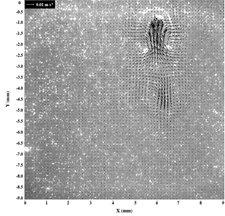
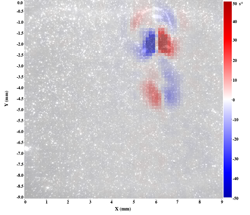
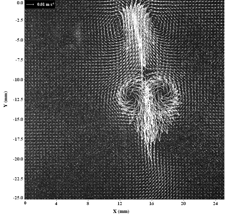
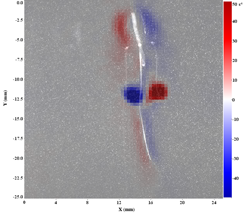


Robotic jet-propelled medusaeStay tuned for an up-to-date description.
Biogenic mixing by individual and multiple (or colonial) swimming organismsBiogenic mixing has received recent attention in studies of diurnally migrating animals. As part of our previous research, we identified an effective mechanism for biogenic mixing called drift. A body moving in fluid can be used to describe drift. As the body moves, fluid is displaced in the direction of body motion, and as the body shape is altered, the volume of drifting fluid changes. This mechanism serves to stir the fluid, and can contribute to mixing in the ocean. To understand how swimming mode, animal size, and morphology affect animal-induced fluid transport or drift, we will conduct qualitative and quantitative measurements of flow surrounding swimming animals in the laboratory and in the field. From these measurements, we will identify particular animal swimming modes or morphologies that enhance the drift volume and transport of fluid in the ocean. In addition, we hope to inform discussion on whether animals swimming in concert can affect the mixed state of a large body of water by conducting a study of fluid drift and mixing by multiple animals (i.e., krill, copepods, salp chains, and colonial siphonophores). 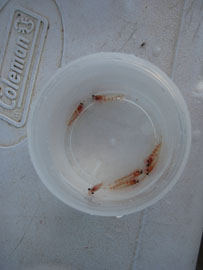
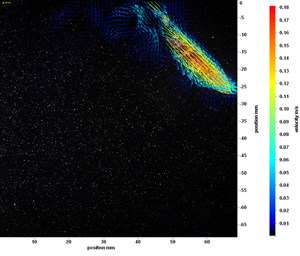 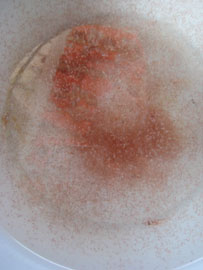
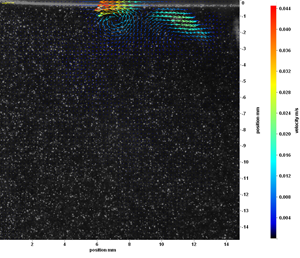
Three-dimensional profiling turbulence measurementsThe topic of ocean turbulence is important due to its impact on the ocean environment and relationship to climate change, making the quantification and characterization of turbulence in the ocean vital to understanding these complex processes. To measure ocean turbulence, scientists commonly quantify flow velocities by using profiling technology that requires assumptions and empirical relationships to characterize the flow, which introduces additional uncertainty. We propose to modify an optics-based laboratory measurement technique for oceanographic profiling to measure fluid velocity. This technology, called Profiling Particle Image Velocimetry (PPIV), will provide volumetric, fully three-dimensional profiling measurements of fluid velocity. Unlike previous ocean turbulence measurements, PPIV results will directly quantify turbulence quantities without the need for simplifying assumptions.
Quantification of flows generated by swimming animals using Lagrangian coherent structures (LCS) analysisMost oblate medusae use flow generated during swimming to capture prey. Quantification of their interactions with surrounding fluid is necessary to understand their feeding mechanics and to develop models to predict their predatory impact. In this study, we quantified how the hydromedusa, Aequorea victoria, interacts with both its surrounding fluid and prey. The fluid interactions were examined in the laboratory and in natural field settings using digital particle image velocimetry (DPIV) measurements. The laboratory DPIV data were used to compute finite-time Lyapunov exponent (FTLE) fields, and Lagrangian coherent structures (LCS) were extracted from the FTLE fields. The laboratory LCS analysis demonstrated that swimming A. victoria only encounter discrete packets of fluid originating upstream of the medusan bell. Based on the size of these packets we estimated that the A. victoria examined have the potential to clear 11.4 L hr-1. Used in conjunction with measured prey capture efficiencies, we estimated potential clearance rates on different prey types. These hydrodynamically-based clearance rate estimates are consistent with previously measured empirical clearance rate estimates. Velocity vector and shear fields also suggested that the feeding current created by A. victoria may be more suitable for encountering copepods than previously thought. Although still preliminary, in situ DPIV data indicates that natural background flows may alter the encounter process from what is observed in still-water laboratory conditions. 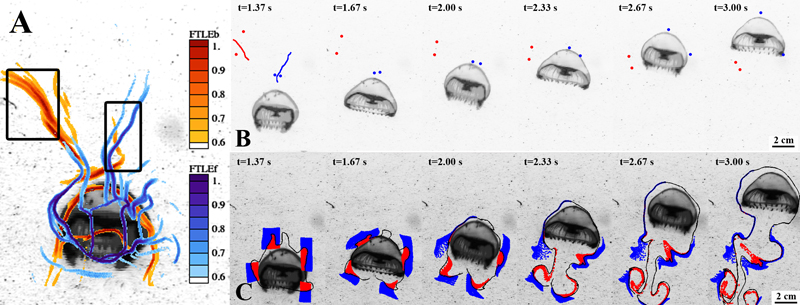
Related Publications: Katija K, Colin SP, Dabiri JO, Costello JH (2011). "Comparison of flows generated by Aequorea victoria: A coherent structure analysis." Marine Ecological Progress Series, vol. 435, pp. 111-123.
|
|||||||||||||||
|
||||||||||||||||
|
last modified: October 17, 2011 |
||||||||||||||||